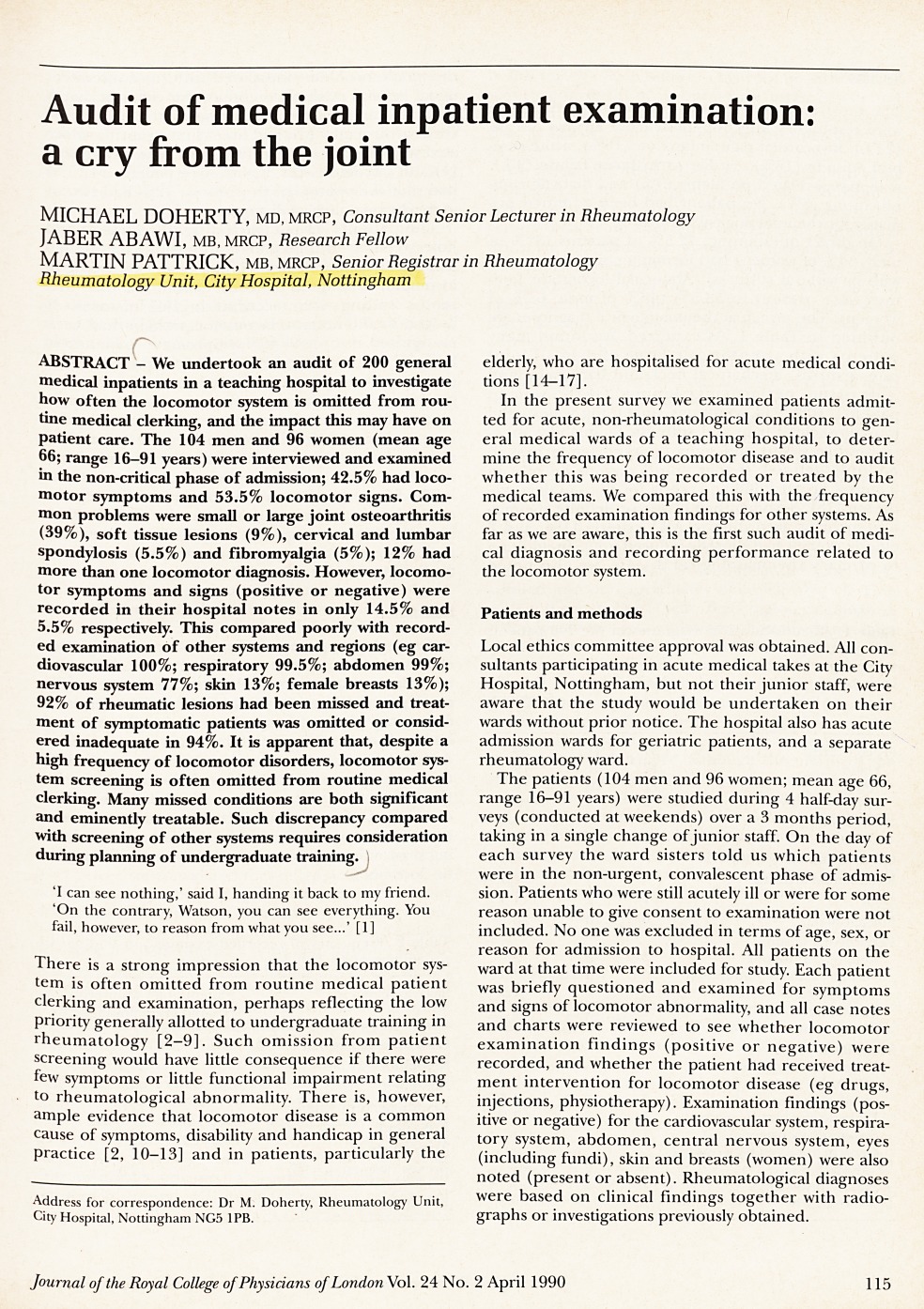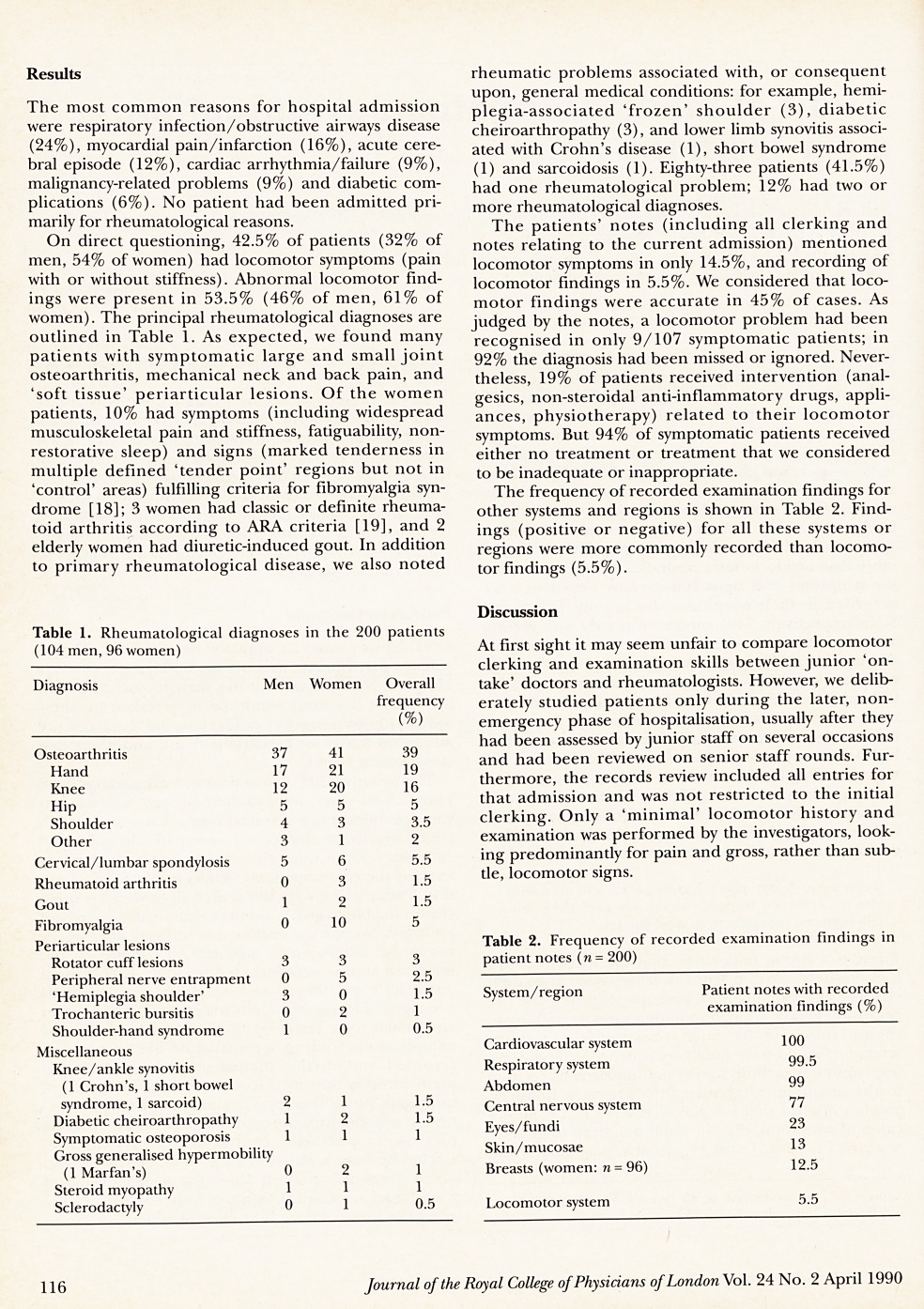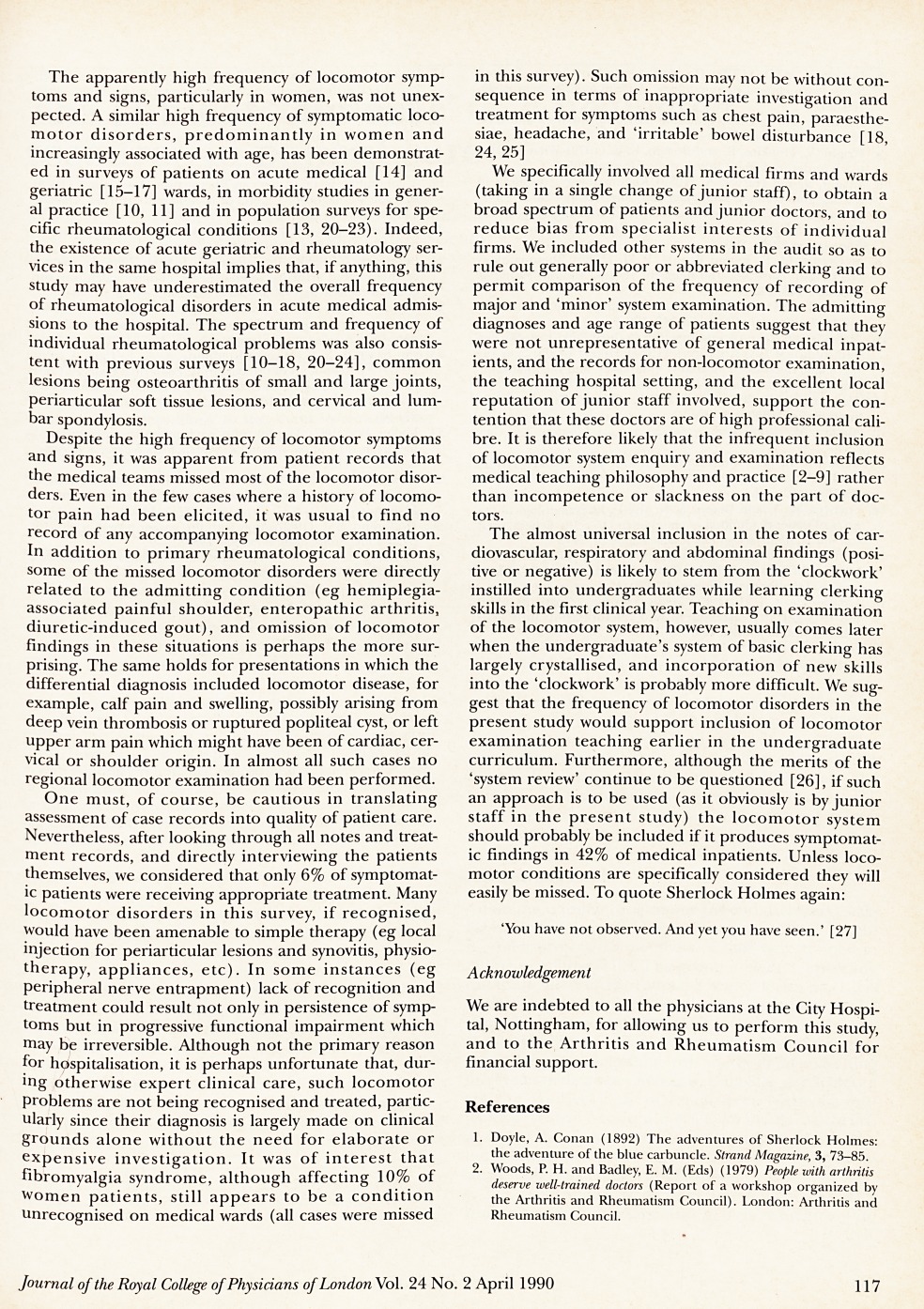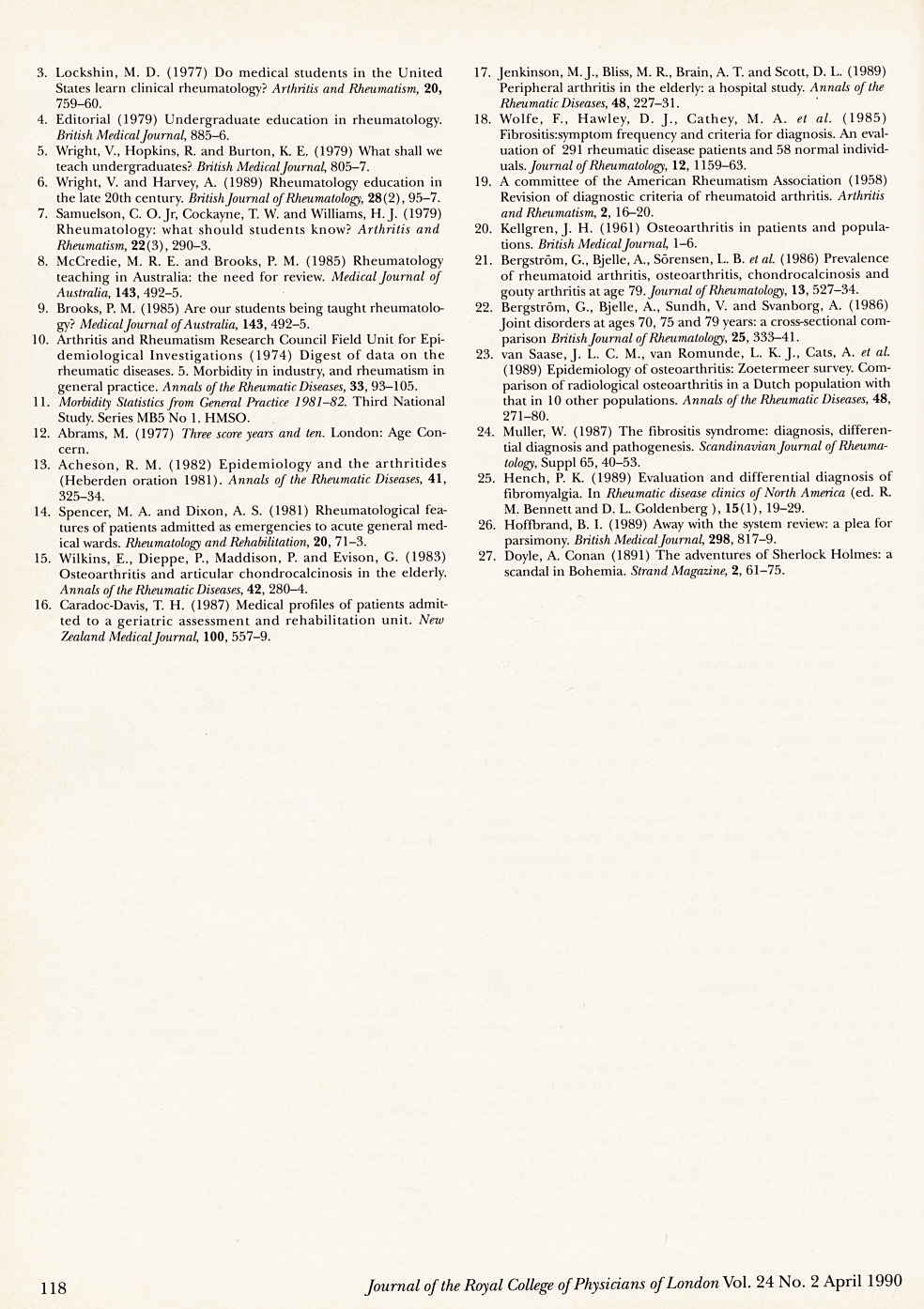Abstract
We undertook an audit of 200 general medical inpatients in a teaching hospital to investigate how often the locomotor system is omitted from routine medical clerking, and the impact this may have on patient care. The 104 men and 96 women (mean age 66; range 16—91 years) were interviewed and examined in the non-critical phase of admission; 42.5% had locomotor symptoms and 53.5% locomotor signs. Common problems were small or large joint osteoarthritis (39%), soft tissue lesions (9%), cervical and lumbar spondylosis (5.5%) and fibromyalgia (5%); 12% had more than one locomotor diagnosis. However, locomotor symptoms and signs (positive or negative) were recorded in their hospital notes in only 14.5% and 5.5% respectively. This compared poorly with recorded examination of other systems and regions (eg cardiovascular 100%; respiratory 99.5%; abdomen 99%; nervous system 77%; skin 13%; female breasts 13%); 92% of rheumatic lesions had been missed and treatment of symptomatic patients was omitted or considered inadequate in 94%. It is apparent that, despite a high frequency of locomotor disorders, locomotor system screening is often omitted from routine medical clerking. Many missed conditions are both significant and eminently treatable. Such discrepancy compared with screening of other systems requires consideration during planning of undergraduate training.
Full text
PDF



Contributor Information
Michael Doherty, Consultant Senior Lecturer in Rheumatology Rheumatology Unit, City Hospital, Nottingham.
Jaber Abawi, Research Fellow Rheumatology Unit, City Hospital, Nottingham.
Martin Pattrick, Senior Registrar in Rheumatology Rheumatology Unit, City Hospital, Nottingham.


